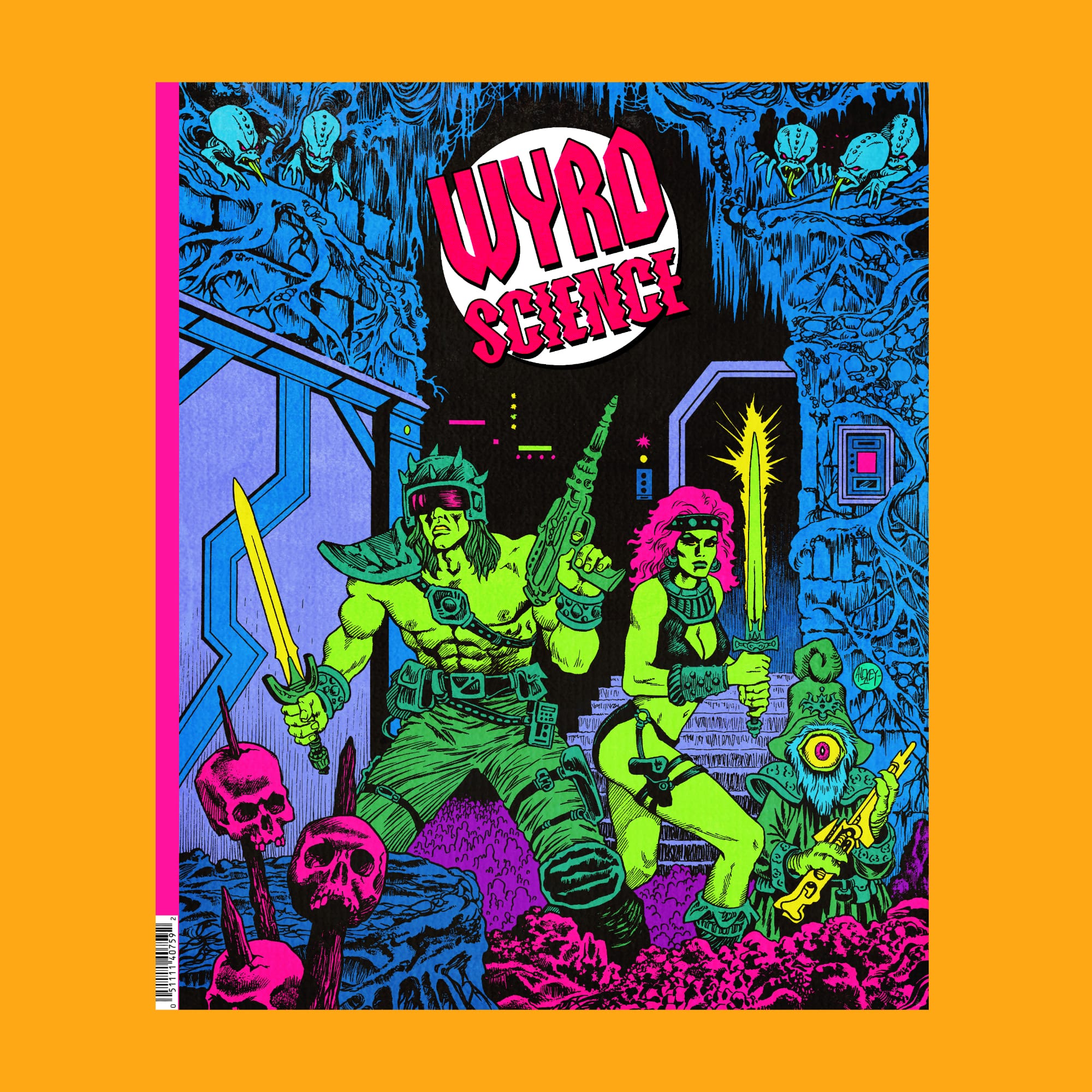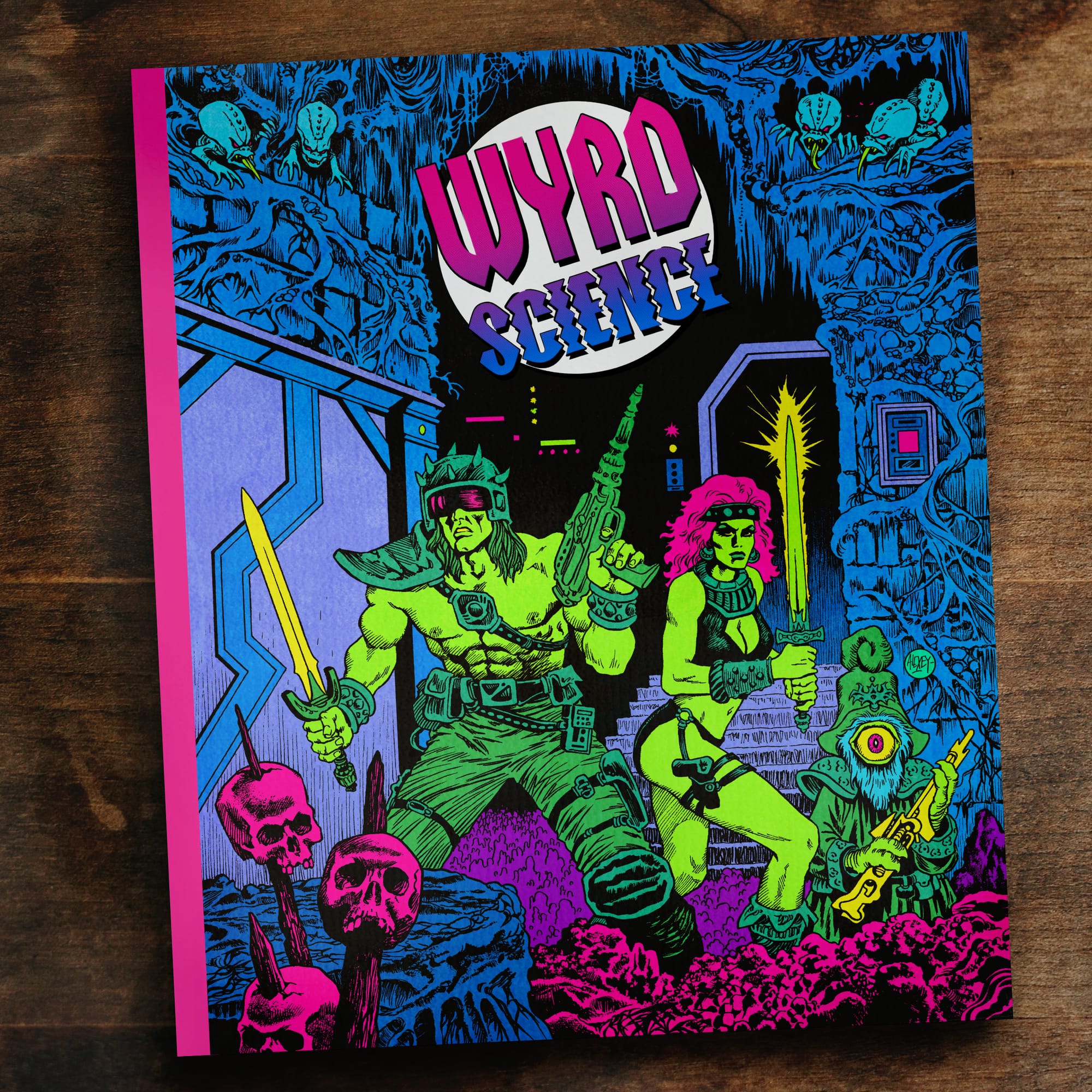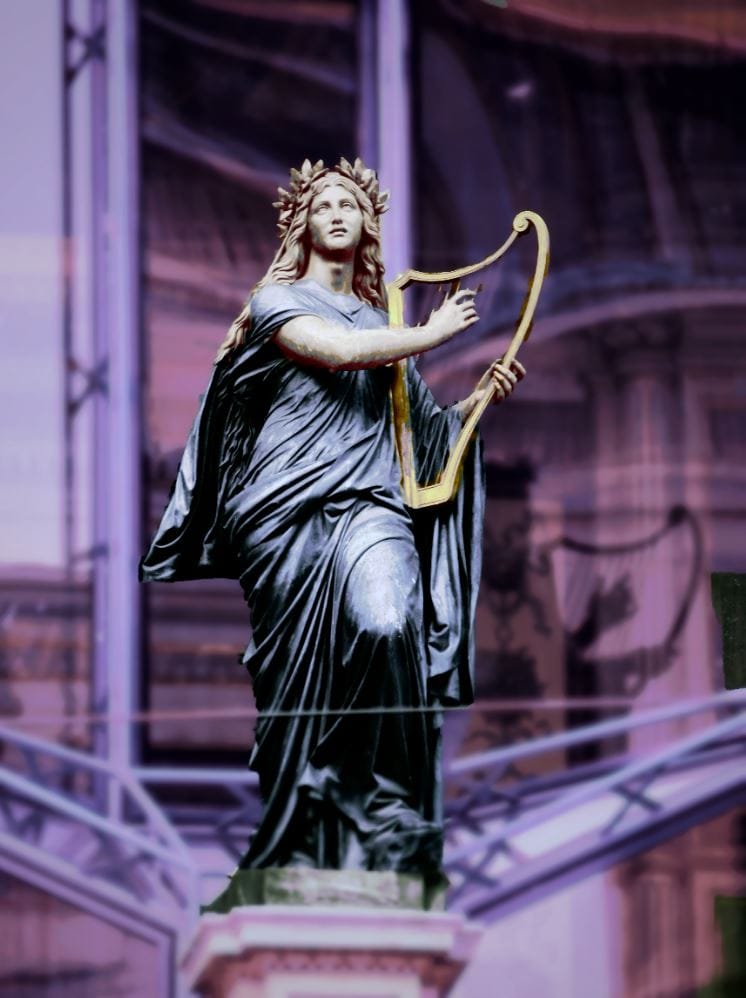
A gazetteer on a Monday? I'd love to say this was some fancy A/B testing to figure out the best time to send it but in reality I've been travelling the past few days and only just found time to crack open the laptop. Anyway, lets start with the dull but good news. Over the past couple of weeks we have been sending out test parcels to the US to make sure the latest import nonsense wasn't about to singlehandedly push us into bankruptcy, and we're delighted to say it seems like they've made it through with no problems.
So, this week we'll finally start sending out issue 7 to everyone who pre-ordered a copy or subscribed, we thank you for your patience, fingers crossed by the next newsletter many of you will have your copies. But if you haven't ordered yet, well there's no time like the present and for a couple more weeks you can still grab a bundle of issues 3-6 at a knock down rate.
Right, obligatory plug done we can move on and indeed with the new issue about to be dispatched we can also finally turn our attention to our website by publishing some original writing there too. And in fact we've already started having just uploaded a feature by a writer new to our shores, Ben Macready. Ben spoke with Andrew Gillis, creator of the magical girl themed RPG, Girl By Moonlight and dug into the game's themes or hope, transcendence and transformation, it's a great piece and you can check it out for free here.
 Wyrd ScienceBen Macready
Wyrd ScienceBen Macready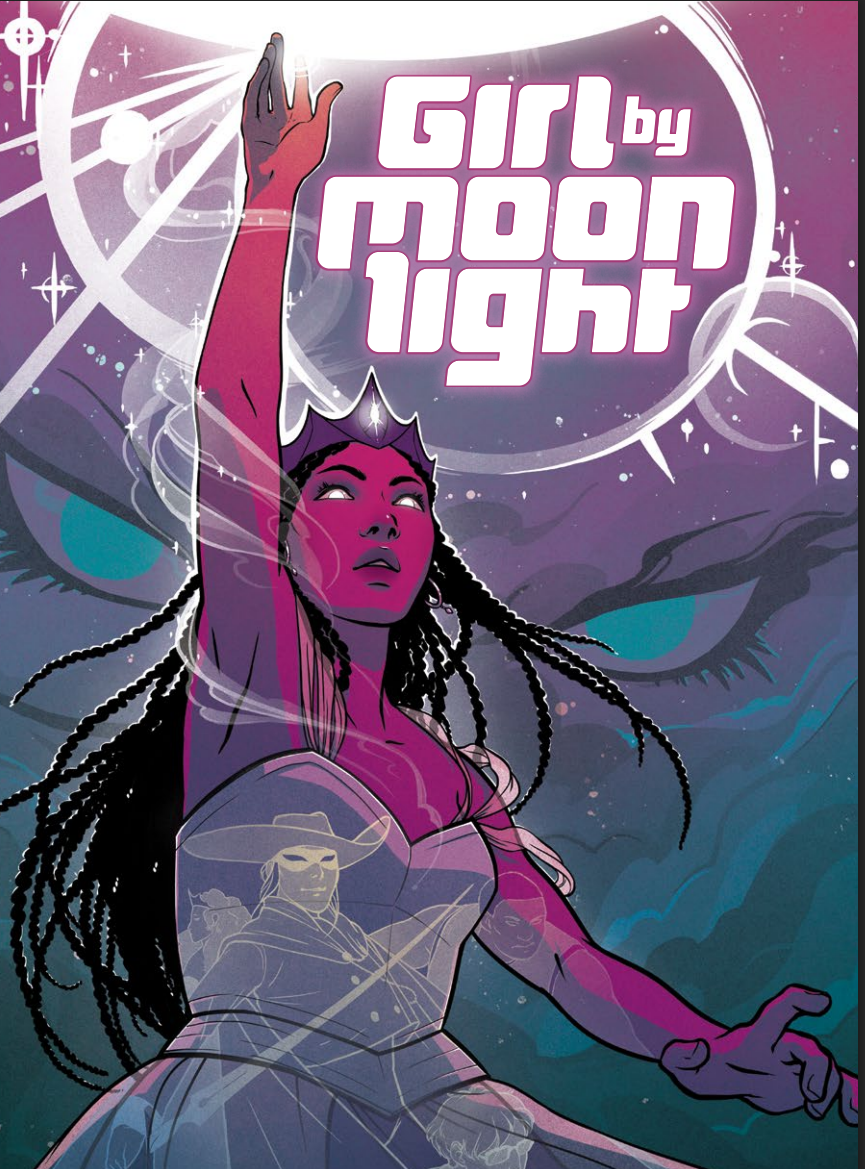
We've made this and many other features on the site completely free to read but we can only do stuff like this, the gazetteer and the several other features we're working on right now, thanks to those of you who have subscribed to the website at the Expert level or above. We're still trying to figure out this whole paid subscriptions business and I very much suspect we need to finesse what we quite hastily threw together at launch, so that's if not next then quite high on the to do list, still a huge thank you to those who have already chipped in.
Anyway, a few weeks ago we mentioned the Appendix N game jam, where people were tasked with creating adventures, or modules in the vernacular, inspired by the kind of pulpy horror and sword & sorcery novels that featured on Gygax's recommended reading list. In the end over two hundred people got involved, so if you're not immune to the charms of mighty-thewed barbarians and clothing agnostic priestesses do go check it out.
Following smoothly in its wake W.F. Smith, of Prismatic Wastelands fame, put out a call for people to create their own Appendices N and he's rounded them up here. What with various magazine related traumas we were too busy to join in, but now we can think about something other than CMYK values I thought I'd brave my own crumbling memory palace and exhume ten key pieces of media that informed my approach to gaming, fantasy, sci-fi and horror and in some way set me on the path to publishing Wyrd Science.
Grossly self indulgent but it's been fun thinking about (and they're all liable to change next week) so for those interested here is a roughly chronological part 1 of, what could (but don't worry won't) run for a 100 issues, Appendix W...
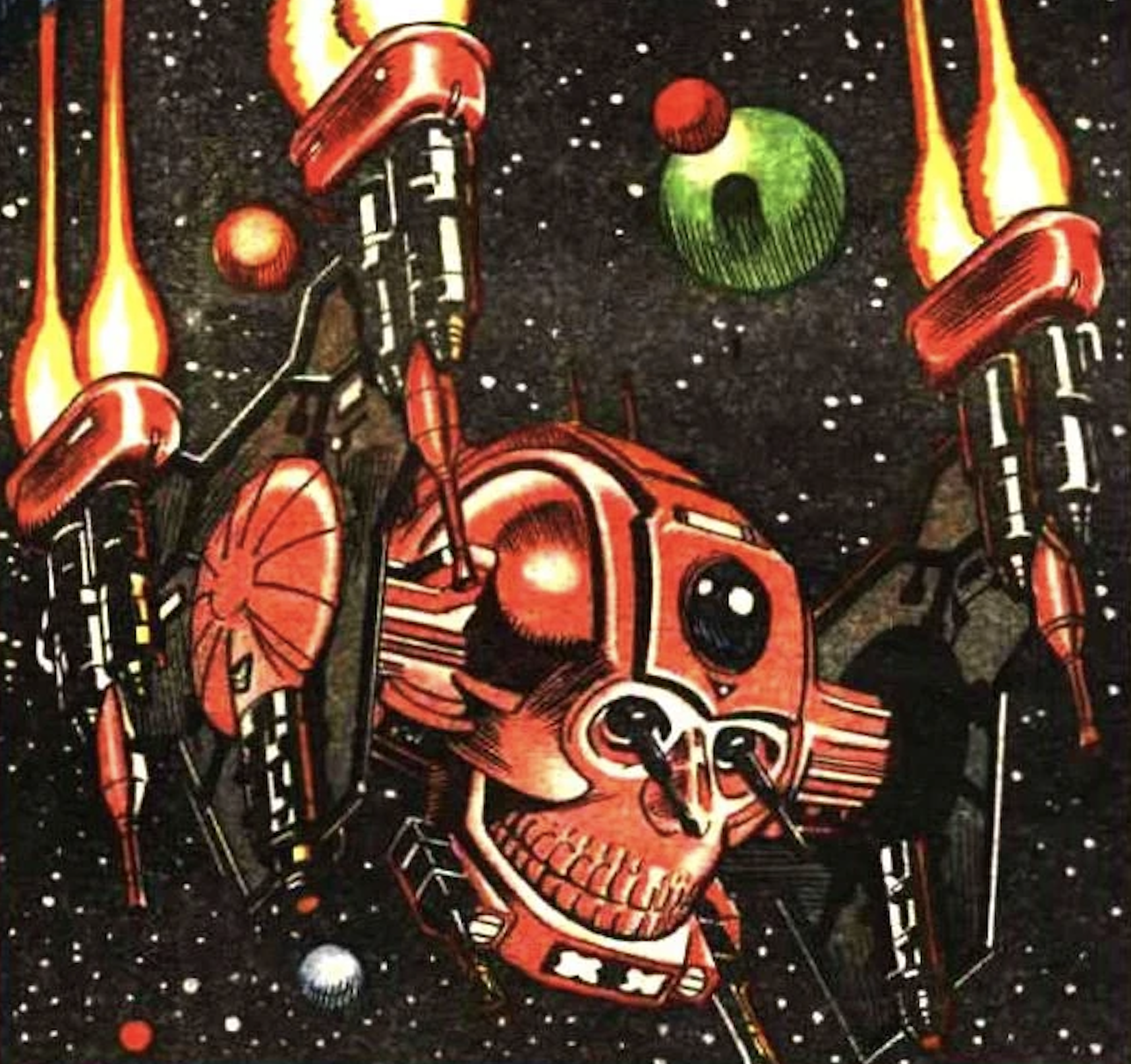
Battle Action Force
Liking Battle Action Force is a real tell me your age without telling me your age thing. Running from late 1983 to early 1987 it was the end result of several other 1970s comics that had been amalgamated over the years. In this case war comic Battle Picture Weekly, adventure comic Valiant and junior thug life house organ Action, with Palitoy's then new war dolly range, Action Force, providing both the final part of its name and half the stories.
That latter addition is why BAF is usually not given quite the respect its predecessors are afforded, but as a six year old who more than anything wanted (and didn't get) a Red Shadow Roboskull it was everything. Still, if the Action Force stories pulled in the kids (and paid the bills, Pailtoy covering the cost of the those strips) it was the remainder, more often than not focused on the World Wars, that made a lasting impression on this and many another six year old kid.
Pat Mills and Joe Colquhoun's Charley's War is probably the most famous of these, a survivor from the original Battle comic. Years before Blackadder Goes Forth stunned a nation's living rooms into silence, Charley's War offered a brutally unflinching WAR IS HELL perspective that was a sobering antidote to the usual jingoistic stories of plucky Blighty that had coalesced into a new national myth for a post-Empire Britain. Incidentally BAF was not just the first comic I bought every week, it was also the first place I was published, picking up a £5 postal order for a cartoon I submitted in 1985, my love affair with print started here.
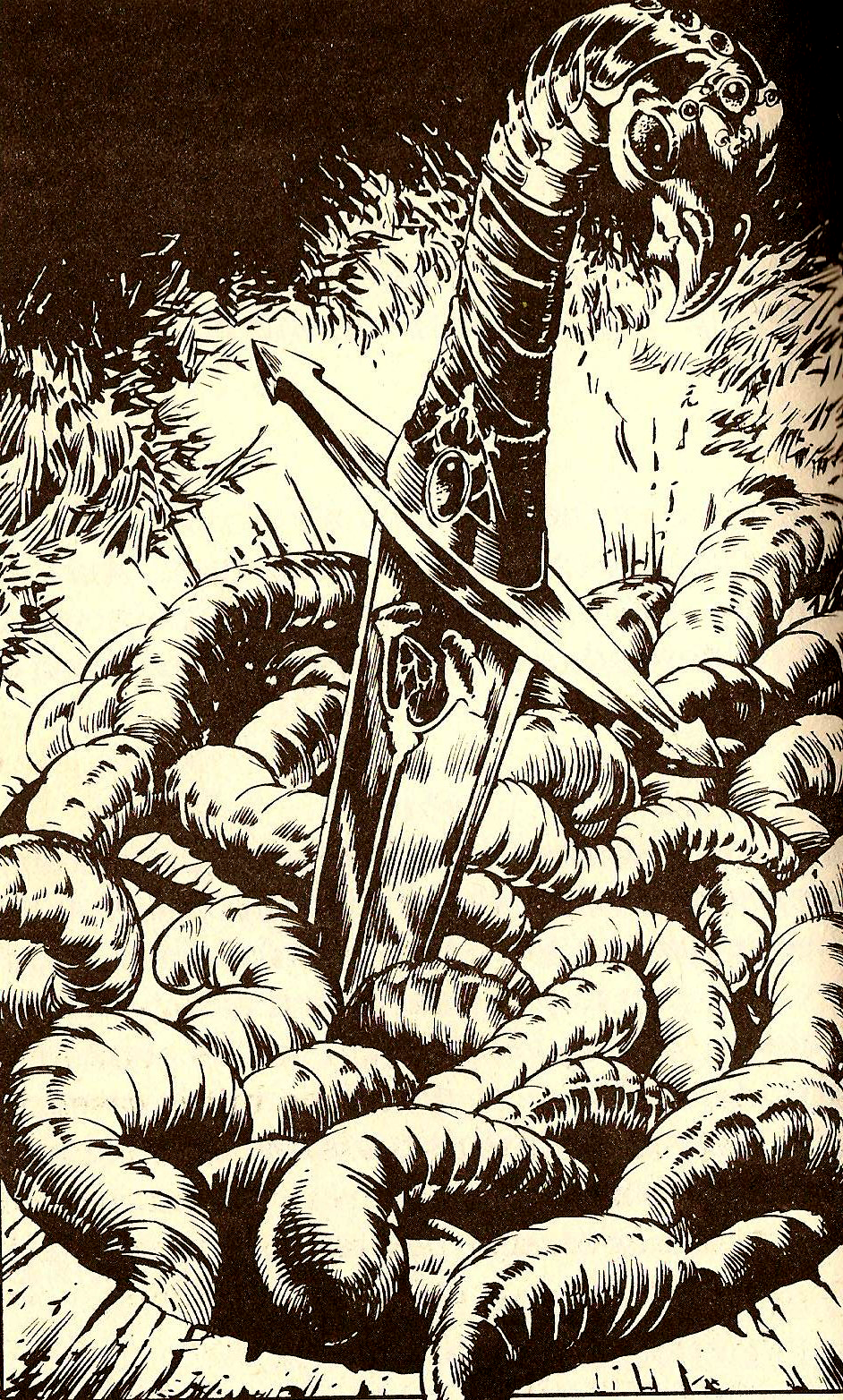
Deathtrap Dungeon by Ian Livingstone
Deathtrap Dungeon was my entry point to both Fighting Fantasy and fantasy gaming and to this day remains my favourite in the series. You weren't some hero on a quest, just someone who was handy with a sword, wanted money and decided entering Deathtrap Dungeon, essentially the deadly, fantasy equivalent of Gladiators was easier than getting a proper job. It was also relentlessly mean, arbitrary deaths hid behind every page and you only find out at the very end you need a certain set of items, which you might never have even gone near, to win. Still, that all only added to its horrible allure.
Especially thanks to Ian McCaig's incredible black and white interior art, Deathtrap Dungeon was a bleak, amoral shithole where no good deed seemed to go unpunished. It's fair to say like many of the early FF books, and along with the likes of Warhammer, it helped set the tone for a particularly British kind of fantasy that I love to this day. It's also, I'm happy to say, stood the test of time. Just the other week I was bored on a flight and realised I had the Fighting Fantasy app on my phone with Deathtrap Dungeon already downloaded. In the intervening 40 years the game hasn't become any less of a bastard, and McCaig's illustrations have lost none of their grim charm.
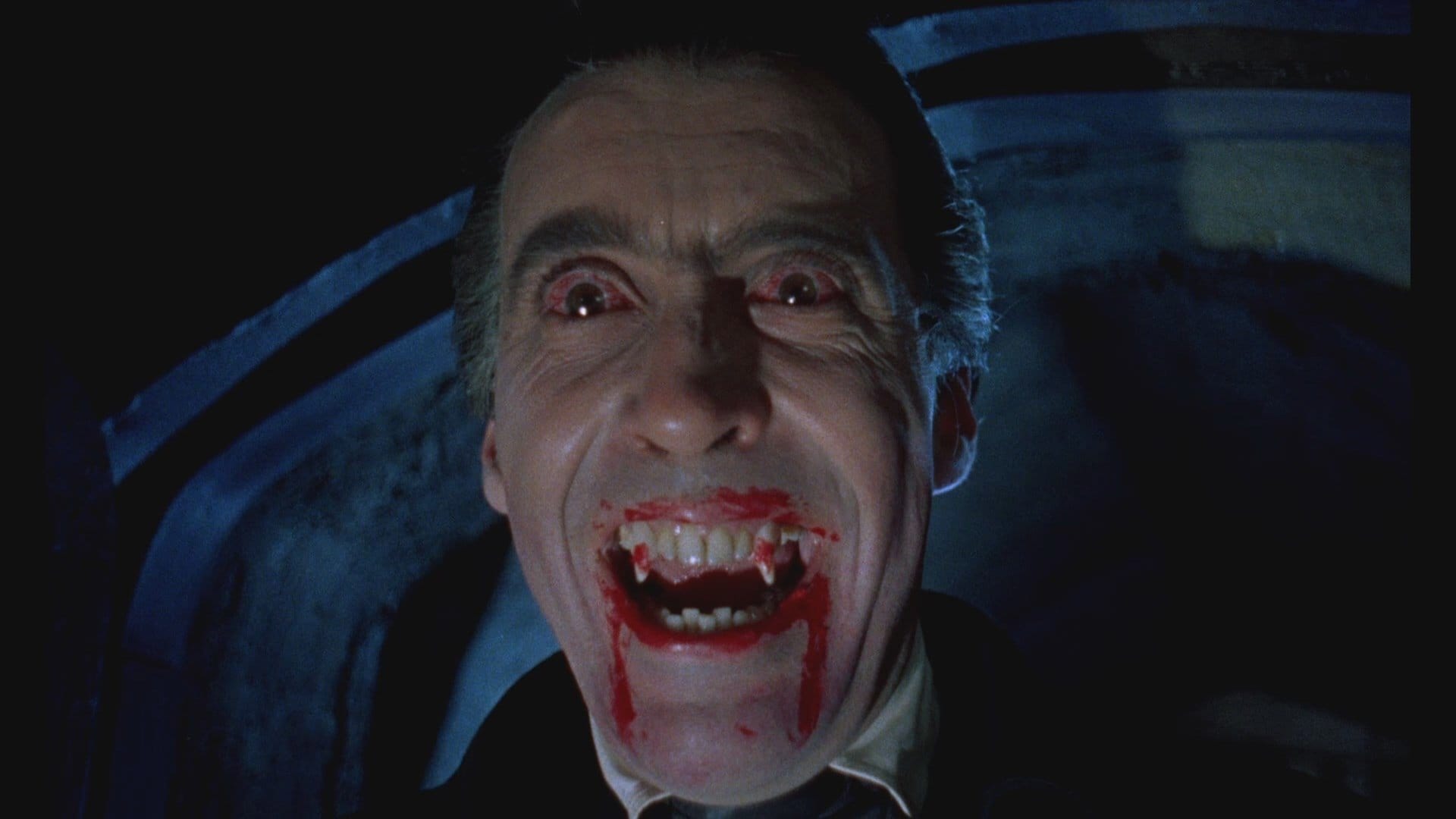
Hammer Horror
For most of my childhood a large percentage of every summer was blissfully spent in a caravan in Cornwall. As the youngest of our extended family I was usually relegated to sleeping on the sofa, but this did mean I could stay up late watching the TV (one that you used to have to shove coins in at regular intervals to keep going) and so it was on one of these trips that I first discovered the Hammer Horror films.
I remember staring at the flickering screen, mesmerised by the often quite camp supernatural antics on display. Enough horror to give you an illicit thrill without totally freaking a young mind out these dark, romantic, gothic tales from the mid twentieth century left an indelible mark on me. Especially when a few years later I performed my own transformation into what I, at the time, considered to be a dark, romantic, gothic (some, my parents for example, would have said insufferable) teenager. Considering I just spent yesterday reading Sheridan Le Fanu's Carmilla you could say this is a phase I've yet to grow out of.
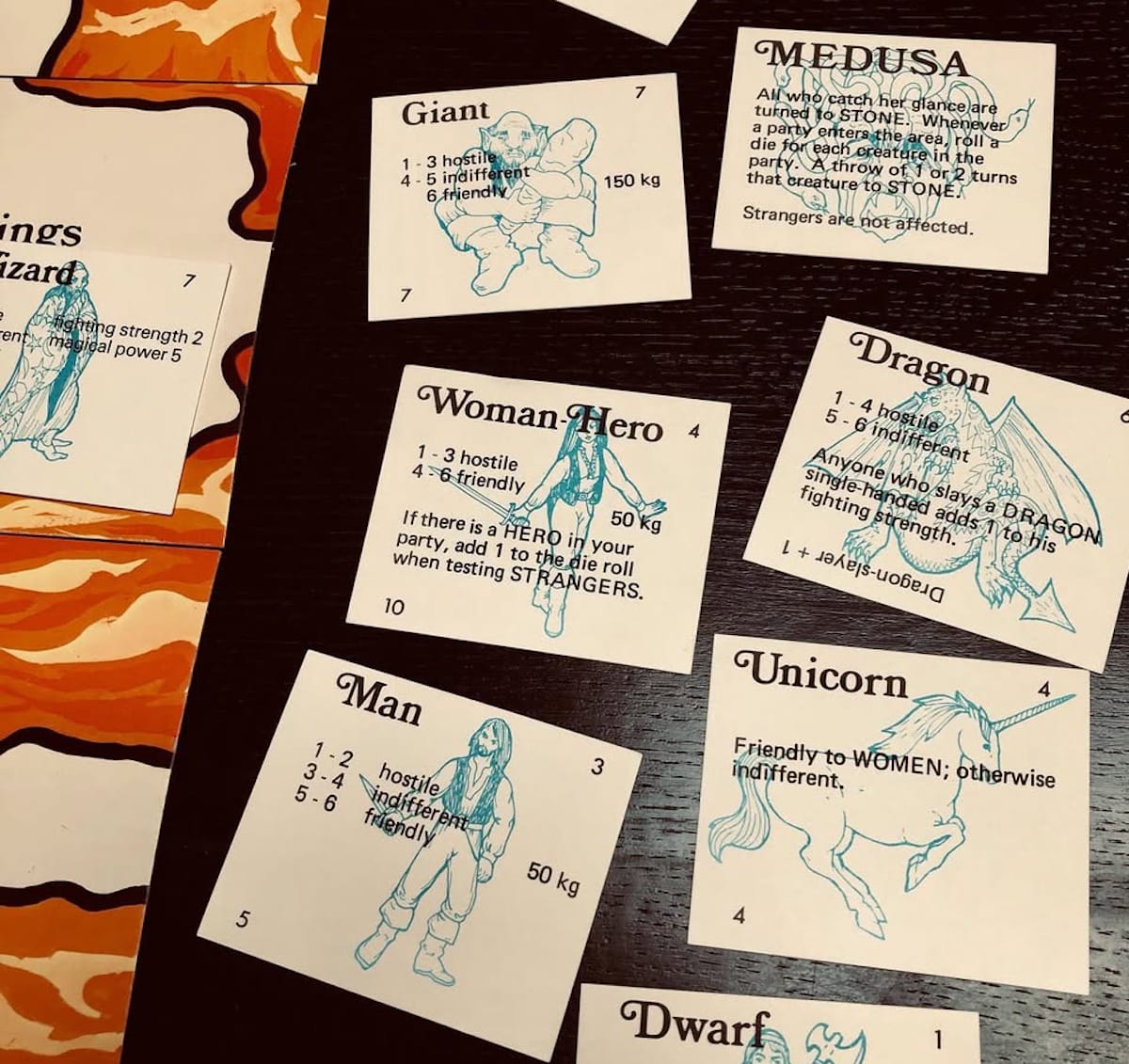
The Sorcerer's Cave
Created by Terrence Peter Donnelly after he wanted a version of Dungeons & Dragons that was easy to set up and required no DM, Sorcerer's Cave was one of the first dungeon crawlers and for me a huge inspiration. My neighbour James had a hand me down copy of this game from the 1970s and in the mid/late 1980s we spent many an afternoon covering his living room floor with its tiles.
Not so much because it was some great game, though honestly it's perfectly fine for a fantasy game created in the mid 70s, but because after a few weeks of playing it we started to create our own roving monsters, deadly traps and magical treasures for it and before long we were effectively creating our own games using the components to hand that soon expanded in size and scope well beyond what The Sorcerer's Cave offered.
Taking off the rose tinted glasses they were probably rubbish, of course, but that's besides the point. The desire to pull apart games and build something new is for me, and I suspect millions of others, an intrinsic part of what to this day makes tabletop gaming so much fun and for me that started here.
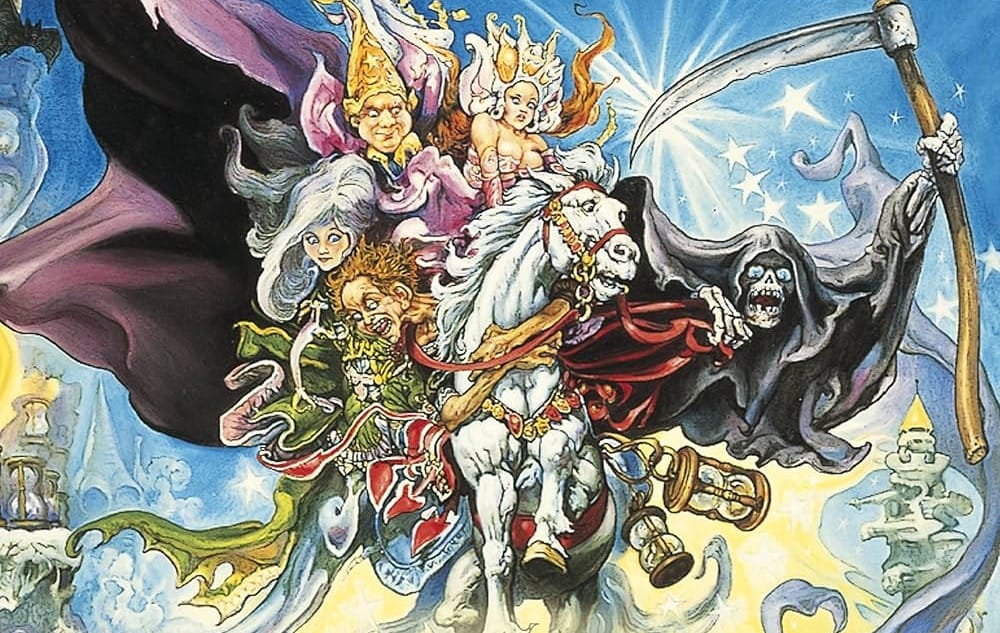
Mort by Terry Pratchett
I was 11, maybe 12, and already deep into fantasy when my friend Jon pressed a battered paperback into my hand at school. That night having dutifully pretended to do my homework I cracked open Mort, Terry Pratchett's fourth Discworld novel, and didn't stop reading until I'd finished it around 3am. For the next 5 or 6 years I read every single thing that Pratchett wrote as soon as it was published and a few years after that was running the science fiction and fantasy section at a branch of Waterstones.
As it happens I'm in good company as Mort is regarded as one of the best starting places for reading the Discworld books and the one where Pratchett found his feet as an author. The sharper social and political themes and anger at an unjust world that characterised his later books were still being developed here, but Pratchett's story of Death's unlikely apprentice contained the seeds of what would come. This was a book that was not only achingly funny but more importantly injected humanity into its fantasy shenanigans, opening my mind to the idea that stories about wizards and dragons could be about more than just escapism.

Sláine - The Horned God by Pat Mills and Simon Bisley
One of my abiding childhood memories is the weekly ritual my granddad and I would perform, burying a miniature bottle of Guinness in the garden for the faeries who'd moved to the UK with them and were missing the black stuff. Having grown up drinking deep myself on stories of Irish myths and legend I was primed for when Sláine - The Horned God started its run in 2000AD in 1989 and could not have been a more receptive audience.
Simon Bisley's incredible fully painted artwork elevated the strip beyond anything else I'd seen in comics at the time and Mills rose to the occasion with the story of the titular Celtic exile, now king, going on a quest to replace the Lord Weird Slough Feg as the new Horned God and become consort of the earth goddess. Violent and sexy, it felt grown up in a way that was catnip to a newly minted teenager and years later is one of the more "grown up" comics from this period that hasn't aged like milk. Indeed as Multiversity put it in a recent look back it's themes of male dominance and old men clinging to power were well ahead of their time.
Already obsessed with folklore and the supernatural, The Horned God is probably more than anything responsible for the library of occult books, including around half a dozen that share its name, that I've been lugging around, and adding to, for over thirty years now.
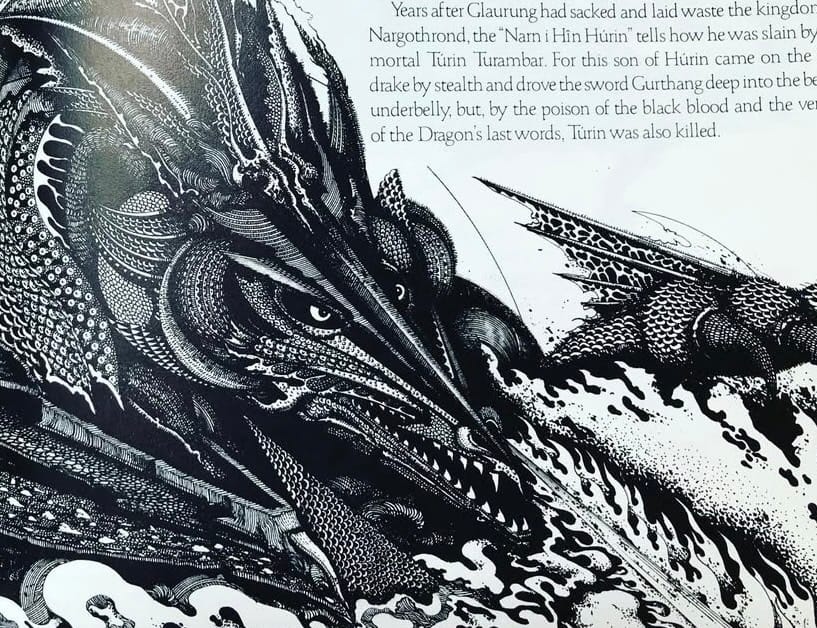
A Tolkien Bestiary
I was torn here between David Days' A Tolkien Bestiary and David Saunder's somewhat less famous and well regarded Encyclopaedia of the Worlds of Doctor Who: A-D, both of which I spent many happy hours lost in. As it happens Day's book has to get the nod, not least because it introduced me to artists such as Ian Miller and John Blanche whose aesthetic haunt my imagination for decades to come.
Still much as the often baroque art, especially Miller's infernal draconic engines, has stayed with me down the years, the debt I really owe it is for deepening in me an incredibly -painfully- nerdy love of bestiaries and background that persists to this day. Sorry fans of anti-canon RPGs but you'll have to prise my lore from my cold dead hands.
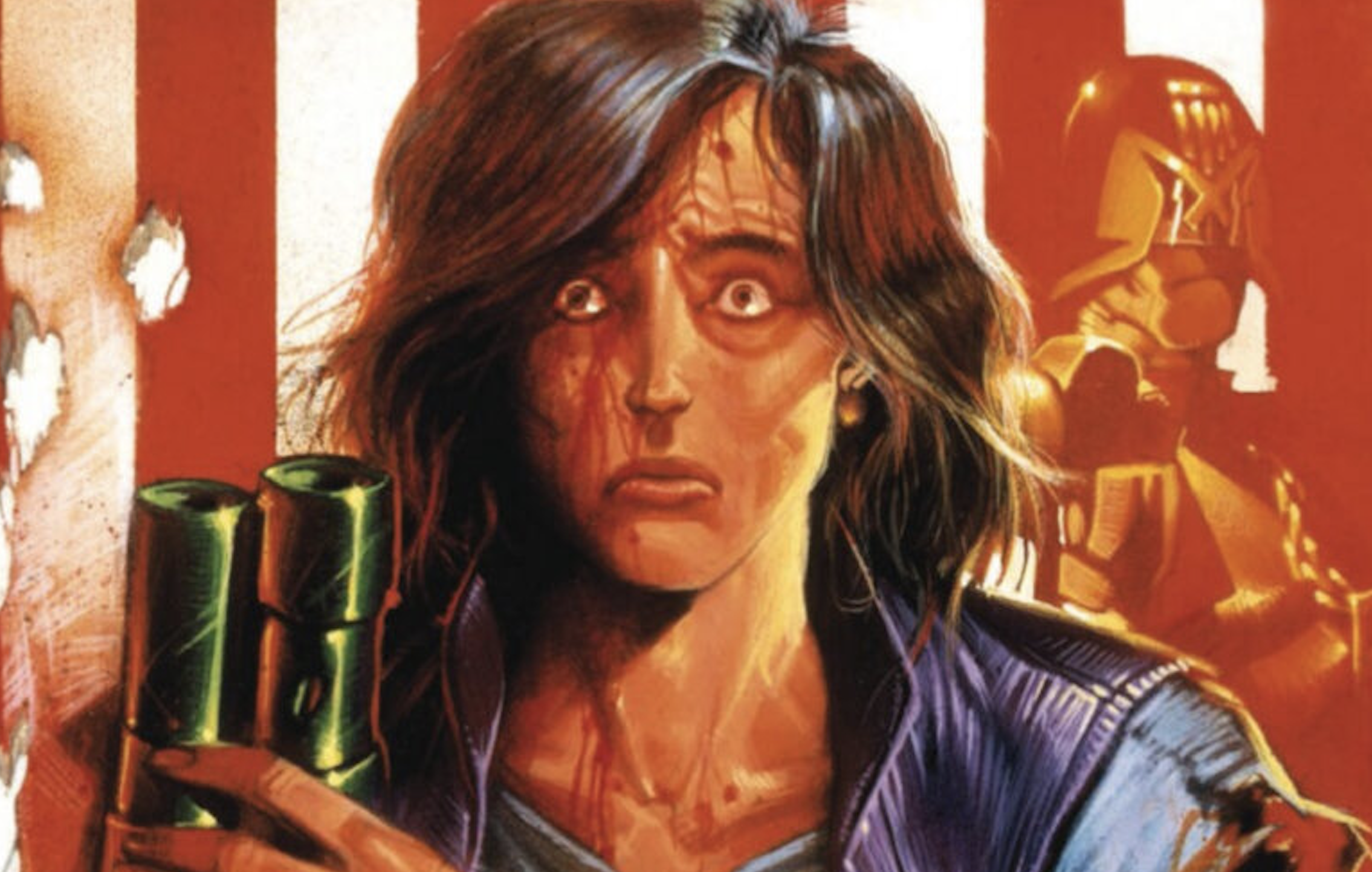
Judge Dredd - America
If Mills raised the bar for 2000AD in 1989 with The Horned God, it didn't take long for John Wagner to rise to its challenge. First serialised in the Megazine in 1990, America is, for me, the defining Dredd story. All the more so for old stoney face playing a somewhat peripheral, if pivotal, role as Wagner unsentimentally stripped any hint of heroism from his crime fighting creation.
A haunting tale of love and loss, this was the reality of life in fascist Mega-City One laid bare for all to see, with absolutely no mistaking who the bad guys were and what they'd done to the American dream. When an epic Dredd storyline can often see tens if not hundreds of millions of people perish, America's focus on just the lives and deaths of a handful of people makes it all the more powerful.
A timeless classic that hugely informed much of my teenage tastes and attitudes and that sadly seems to be becoming more not less relevant as the years go by.
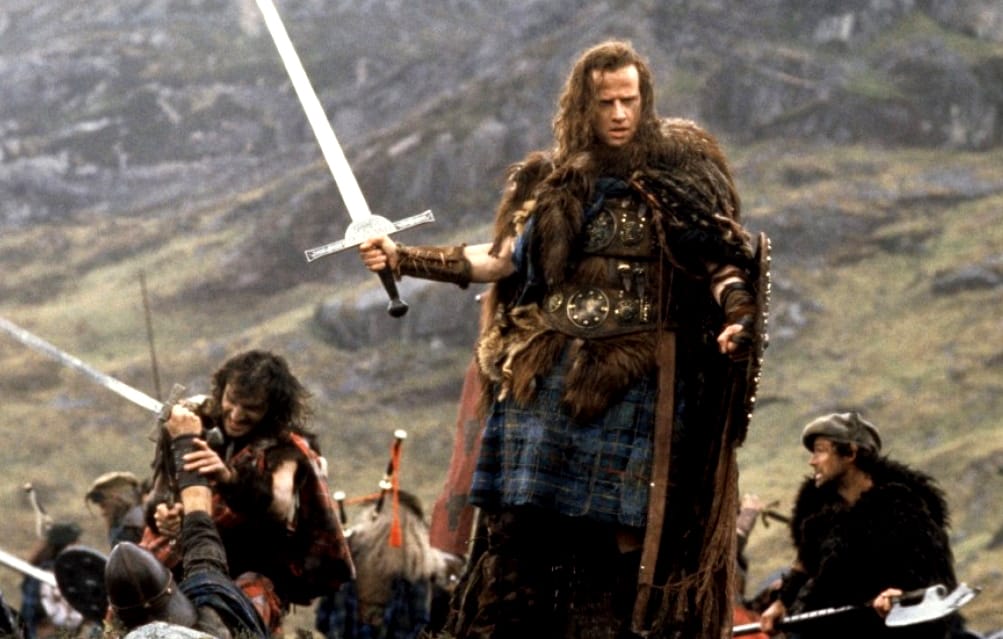
Highlander
I can't exactly remember what started it, but at one point during the covid lockdowns my wife & I decided to revisit classic films from our youth, and upon finding out she'd never seen it, Russel Mulcahey's Highlander went straight in the DVD player. I think we were about 30 minutes in when she paused the film, turned to me with narrowed eyes and pronounced that so much now made sense. The fact that I had spent much of my office life daydreaming of being a blacksmith, that just a few years earlier I had, quite ridiculously, joined a longsword fighting club, the Queen It's A Kind of Magic t-shirts, I could go on. Guilty as charged, your honour.
Highlander was one of those handful of films our teenage group had VHS copies of and so, alongside the likes of Hardware, Mad Max and Children of the Corn, made an appearance at the end of most nights. Every line of its barely coherent story of sword fighting immortals with unlikely accents absorbed by our easily influenced, stoned brains. I would struggle to think of any grand moral lesson or universal truth that Highlander imparted upon me, bar that there can be only one, but to this day the influence on this ridiculous film seems to be buried deep within my DNA, and continues to resurface in unexpected ways.
Just a shame, I guess, that they never made any sequels.
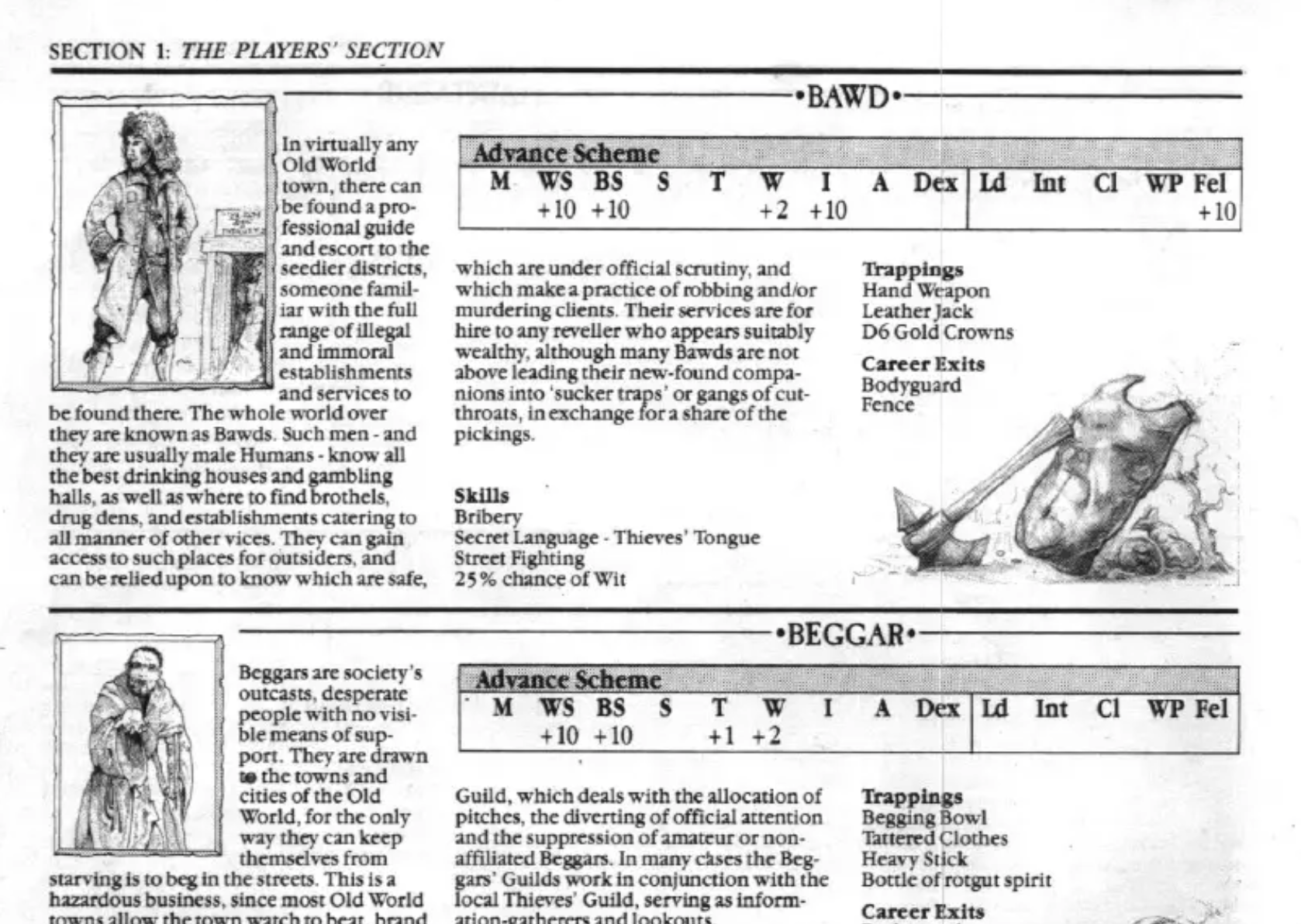
Warhammer Fantasy Role-Play
WFRP wasn't my first RPG, that was Dave Morris' Dragon Warriors that I accidentally bought from a Scout jamboree in 1986 thinking it was a choose your own adventure game. When it did come into my life a few years later I never even owned it, with limited resources whoever bought a game first back then seemed to have unspoken dibs upon it. Still I was obsessed with my neighbour Matt's copy and spent many hours in his bedroom thumbing through it, committing as much of it as I could to memory.
Dark, funny and British in a way that felt attuned to my friend group's growing teenage alternative sensibilities, WFRP promised adventures that felt more grounded and yet more urgent than the stabbing and looting that we'd mainly been doing to date. Its cast of ne'er do well scabbed up road wardens, pit fighters and of course rat catchers somehow both more real and yet more heroic in facing down the horrors of the world than any golden skinned DnD immortal.
When I tentatively started getting back into gaming in 2018 it was seeing -and buying- a new edition of the game, now published by Cubicle 7, that finally tipped me back into the world of roleplaying games and just a few years later led to the launch of Wyrd Science.
So there we go even in writing this I thought of half a dozen more (and horrifically discovered that Skeleton now sell a £200 Roboskull toy) but I think I've indulged myself enough for one week. Respect for anyone who made it this far and if you did why not drop a comment and tell us what set you on your own personal journey into wizardry. Right, there's more stuff below for you to check out and hopefully next time we see each other some of you will have a new issue in hand but until then...
John x
Buy a mag and I will try not to buy a Roboskull with the money.

Crowdfunding campaigns for things both diverse and interesting...
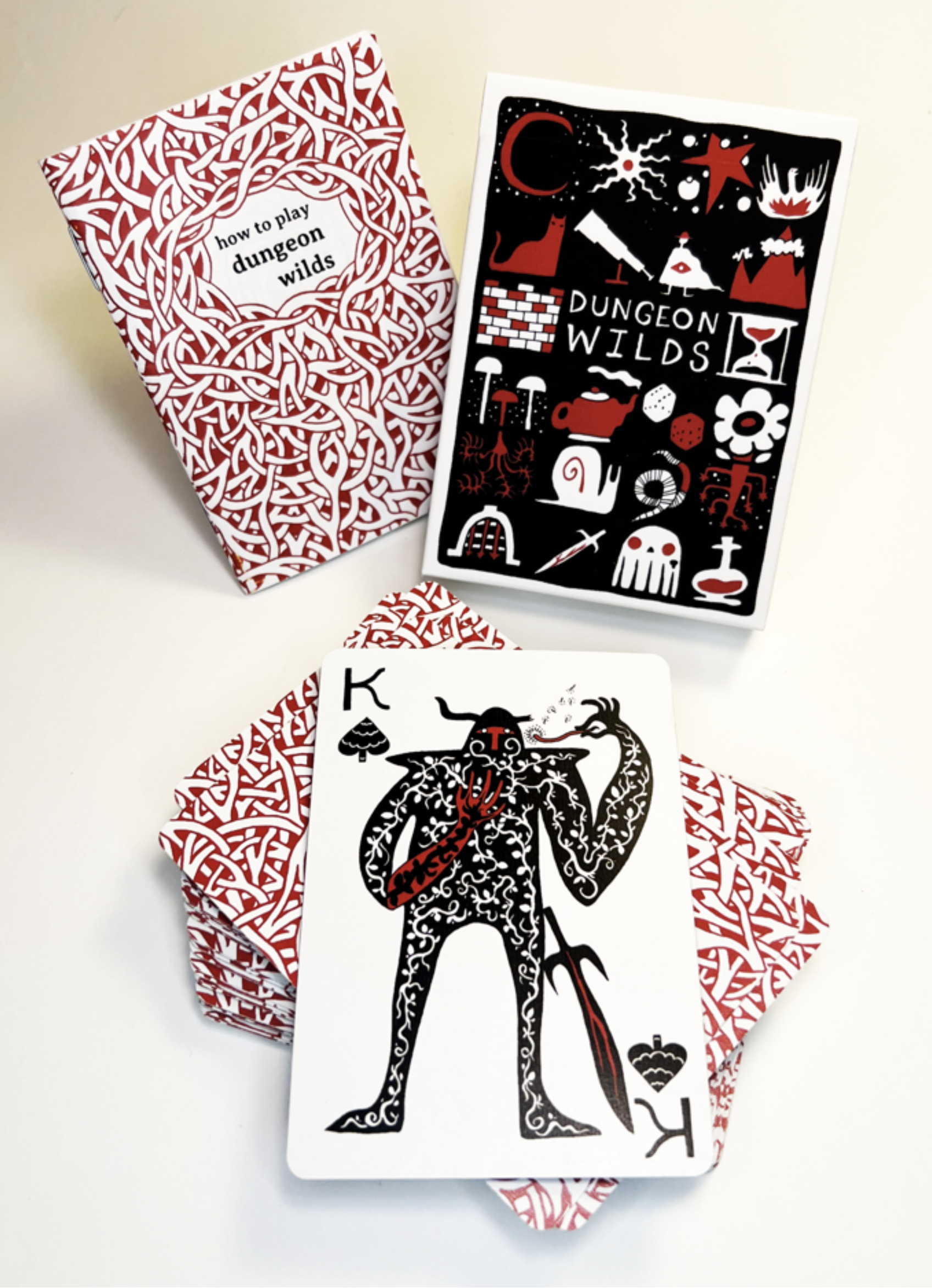
Dungeon Wilds (2.0)
We last featured the work of artist Jon Sacha nearly three years ago when he was happily defacing old Dungeons & Dragons manuals and horticultural guides alike, turning them into quite remarkably beautiful tarot cards.
Anyway, in the intervening years he's been working on his game design and is now kickstarting a 2nd edition of his card based game, Dungeon Wilds. It's curious and delightful little game that takes that old staple Rummy and turns it into a dungeon generating system.
The aim is not so much to vanquish the dungeon's inhabitants and claim its loot but rather rewind it, clearing traps and spreading seeds as you go, even if you fail your bold adventurers now lifeless corpse will just become fertiliser and part of the cycle of life. Which I guess is nice.
We've been playing around with the first version of the game (which you can download off Itch) and it's a strange but enjoyable way to spend some time in the company of a pack of cards. The new 2.0 version adds more complexity to the game, with the path to clearing each level becoming more complicated and complete rules for two players.
It is also just quite lovely looking, the rules themselves come in a lovely little riso printed zine and they have just hit the stretch goals so that backers will get two extra zines that both expand the game further and provide a hint of where Sacha wants to take the game next. Most importantly though you also get a beautiful deck of playing cards, all illustrated by Sacha, that for me are worth the price of entry alone.
Find Dungeon Wilds 2.0 on Kickstarter until Oct 1

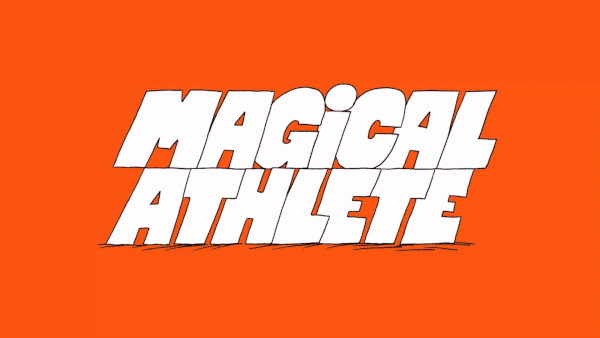
Being where we share all the other stuff, gaming and related or not, that's held our attention this week...
++ Amazingly, when I think about why I wanted (and still want) to do Wyrd Science it wasn't just to write several thousand words about the things I enjoyed as a kid (hard as that might seem to believe right now). The slightly more noble idea was to show how games are as intrinsic a part of our culture as music, film, novels are and how just like other media they can be used as a lens through which to tell our stories and make sense of the world.
That's still very much a work in progress, but this article Rolling Stone just published is about as good an example of what, given the budget to do it properly, that approach can result in. A wonderful article that's well worth setting aside the time to read.
 Rolling StoneMatt Negrin
Rolling StoneMatt Negrin
++ For lots of reasons, many of which are probably self-evident I've been feeling a little doomery of late. And perhaps, because of that, most of my brain's bandwidth that I've allocated to games has been focused on those of a more, let's say, worthy nature, games that in some way feel up to the moment.
So it has been a much needed corrective this week to be introduced to CMYK's reissue of Magical Athlete, a game that appears to be just 100% stupid, brightly coloured fun and looks like its escaped from a Sesame Street animation. Personally I'd never heard of it before Charlie and Dan posted their reviews of it last week, but straight in the bag it goes. I cannot wait to get this absolutely gorgeous looking nonsense to the table.
 SPACE-BIFF!Dan Thurot
SPACE-BIFF!Dan Thurot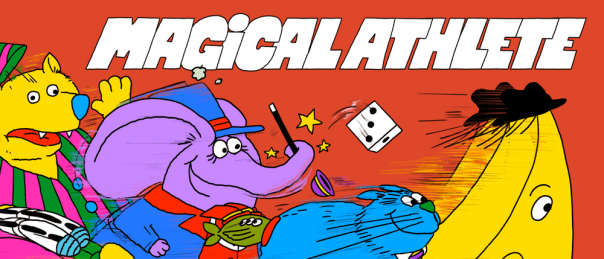
 Player EliminationCharlie Theel
Player EliminationCharlie Theel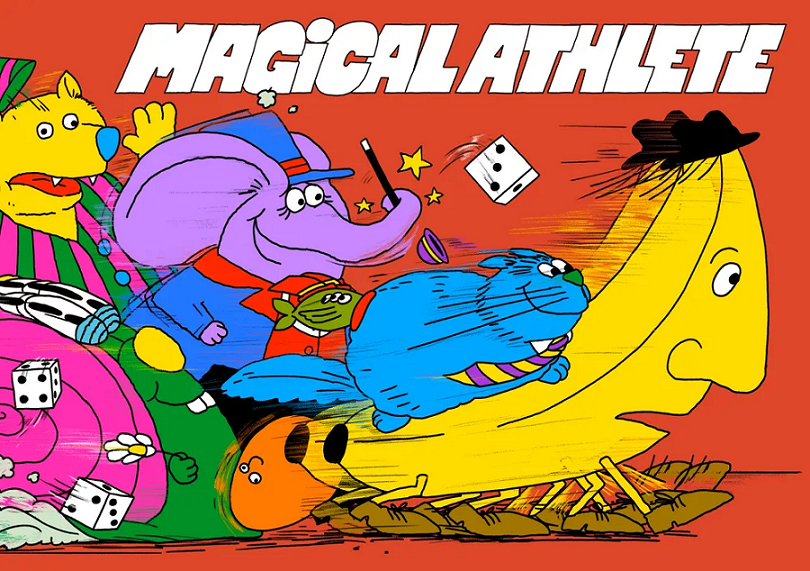
++ Exactly why the fantasy realms we like to adventure in are filled with so many underground lairs and dungeons is one of those fun questions that is often asked and has often as much inspired some fun answers. Personally I'm particularly fond of the idea that they're extra-dimensional apex predators, using gold like pollen to attract, trap, kill and feed off adventurers.
Anyway I very much enjoyed this piece, that in an attempt to find a satisfactory answer, goes back to the AD&D manual and figures out that it's all the fault of old adventurers desperately trying to feel something as they settle into retirement. The circle of dungeon life.

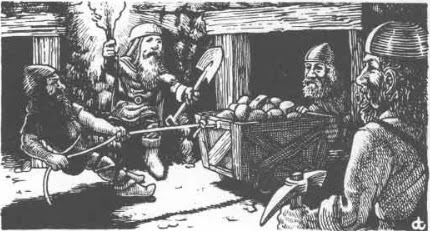
++ A fantastically in-depth digression into the nature of hexcrawls, real sickos shit.
 Dwiz
Dwiz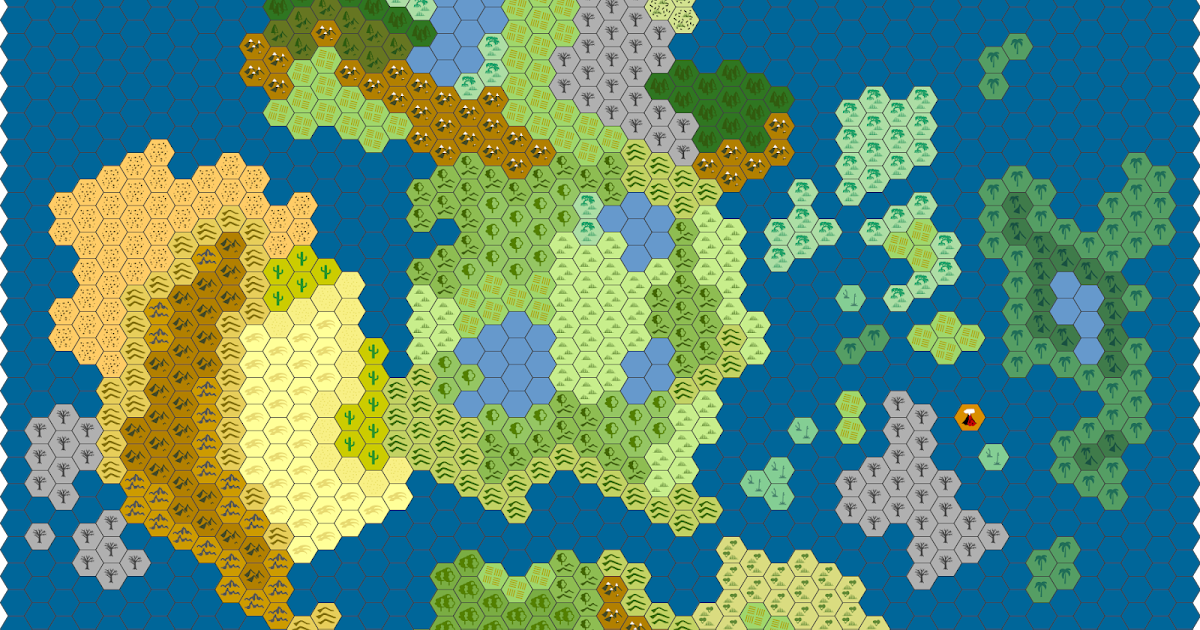
++ A couple of months ago we put out a plea for more game designers to write manifestos and, well, we aren't nearly egotistical enough to believe there's any connection here but Jay Dragon's The Expressionist Games Manifesto is exactly the kind of thing we wanted to see.
There's been some great, and not so great, responses to this but that is the nature of these things. Anyway, it's well worth chewing over and even, or especially, if you disagree you should go nail your own manifesto to the door of your local games store.
 MediumJay Dragon
MediumJay Dragon
++ I love this piece written by Dr Francis Young that is ostensibly a review of a new book but becomes a meditation on our desires to make sense of the unknowable past & give sense to the ancient landscape around us that drives us, rightly & wrongly, to forge connections with the phantoms who populated it.
 All Old Strange ThingsFrancis Young
All Old Strange ThingsFrancis Young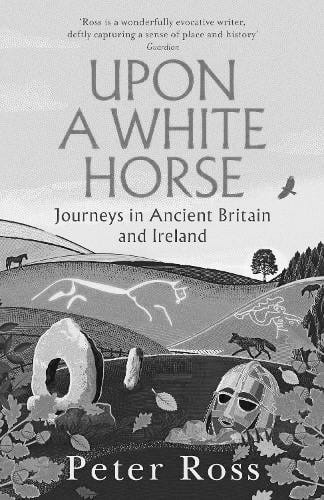
++ Playing us out this week are Wyrd Science faves Castle Rat, who have just released their second album The Bestiary. Having been on repeat here the past few weeks we are pleased to say that it is an absolute monster and what's more you can read more about it in our new issue...
Go on treat yourself...



